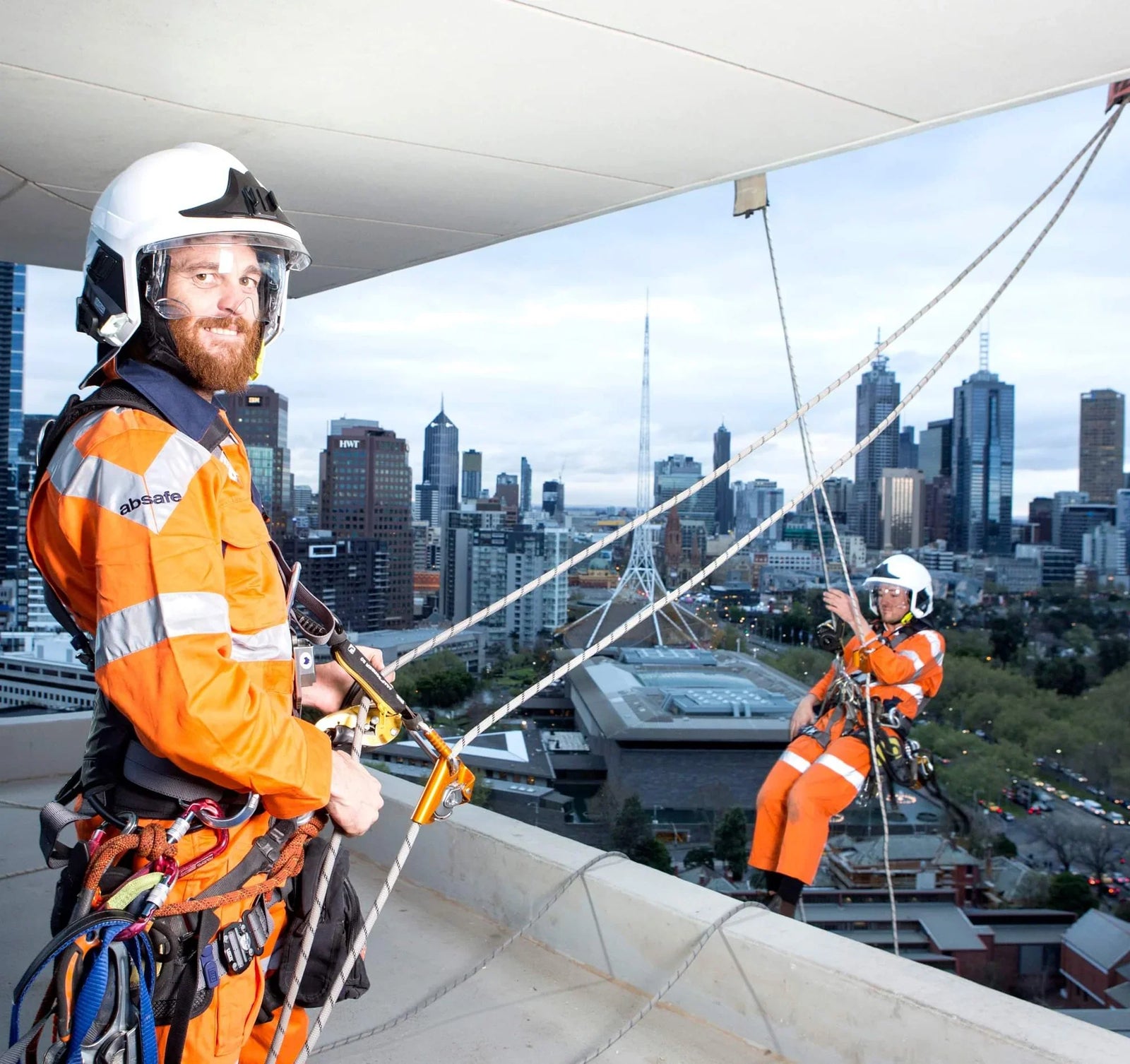Rope access is the professional use of ropes to carry out inspections, maintenance, and other specialised tasks in hard-to-reach areas. This innovative approach comes from caving and climbing techniques and has been adapted for industrial use, offering a safe and efficient solution for working at heights.
To navigate challenging environments, rope access combines various climbing methods with advanced safety equipment. This technique is often employed in confined spaces, work sites above water, or within limited building spaces. It allows workers to access areas that might otherwise require costly scaffolding or aerial platforms, making it a cost-effective and versatile choice.
The Evolution of Rope Access
The origins of rope access can be traced back to the 1980s when industrial workers started adopting techniques from climbers and cavers. Organisations like the Industrial Rope Access Trade Association (IRATA) were later established to formalise the practice. These organisations developed strict safety standards and guidelines, making rope access a reliable method for industrial tasks.
Today, rope access is widely used across various sectors, including construction, civil engineering, and maintenance. It has proven to be invaluable for tasks such as window cleaning, maintenance work, and structural repairs. By eliminating the need for bulky equipment, rope access minimises disruption and streamlines operations.
How Rope Access Works
The primary objective of rope access is to provide safe and efficient access to difficult-to-reach locations. Rope technicians are trained to ascend, descend, and traverse ropes while securely harnessed. In some cases, a specialised work seat may be used to enhance comfort and support during prolonged tasks.
Rope access systems typically involve redundancies to ensure worker safety. Two key components are:
-
Dual Rope System: This system includes a working rope and a safety rope, providing a fail-safe mechanism in case one rope fails.
-
Additional Anchor Points: Technicians use a primary anchor point along with two backup anchors to enhance stability and safety.
These measures significantly reduce the risk of accidents, making rope access one of the safest methods for working at height.
Benefits of Rope Access
Rope access offers several advantages over traditional methods of working at height:
-
Accessibility: Rope access can reach locations that are otherwise inaccessible, whether at extreme heights or confined depths.
-
Safety: Adhering to IRATA guidelines ensures that rope access is a safe practice when performed by trained professionals.
-
Speed and Efficiency: Rope access systems can be set up and dismantled quickly, reducing downtime and project costs.
-
Minimal Disruption: The compact nature of rope access equipment means it takes up little space, causing minimal interference with ongoing operations.
-
Environmentally Friendly: Without the need for large machinery, rope access has a lower environmental impact, making it a sustainable choice.
Limitations of Rope Access
Despite its many benefits, rope access does have some limitations:
-
Perception: Some organisations may perceive rope access as risky, despite its strong safety record.
-
Restricted Areas: Rope access cannot reach every location, particularly where obstacles prevent rope placement.
-
Directional Constraints: Rope systems rely on gravity, limiting upward movement without additional support.
-
Task-Specific Challenges: Certain maintenance tasks may be impractical or impossible to perform while suspended.
Common Rope Access Techniques
Rope technicians follow a systematic approach to ensure safety and efficiency:
-
Preparation: Risk assessments are conducted, and anchoring points are established.
-
Placement: Technicians position themselves in the required area using rope systems.
-
Implementation: Tasks such as inspections, maintenance, or cleaning are carried out.
-
Debriefing and Cleanup: Equipment is removed, and safety reviews are conducted to identify areas for improvement.
Types of Rope Access Systems
Two primary systems are commonly used in rope access:
-
Dual Rope System: This system includes a primary rope for work and a secondary rope as a backup. Both ropes must have secure attachment points to ensure safety.
-
Buddy System: This approach pairs technicians to provide mutual support and assistance, allowing for efficient rescue operations if needed.
By combining these systems, rope access ensures maximum safety and flexibility during operations.
Essential Rope Access Equipment
Rope access relies on specialised equipment designed to enhance safety and performance. Key items include:
-
Ascenders: Devices that allow technicians to climb ropes smoothly and securely.
-
Descenders: Tools that enable controlled descent, often equipped with self-braking mechanisms.
-
Lanyards and Energy Absorbers: These connect harnesses to anchors and reduce impact forces during a fall.
-
Harnesses: Full-body and seat harnesses provide support and multiple attachment points for various tasks.
-
Helmets: Protect against falling debris and ensure safety in case of accidents.
-
Ropes: Lightweight, flexible, and durable ropes are the backbone of rope access systems.
Additional equipment, such as pulleys, foot loops, and fall arrest devices, further enhances safety and functionality.
Rope Access Training and Certification
Given the inherent risks of working at height, rigorous training and certification are essential for rope access technicians. Organisations like IRATA offer structured training programmes with three certification levels:
-
Level 1: Covers basic rope access techniques, equipment inspection, and rescue procedures.
-
Level 2: Focuses on advanced rigging, safety protocols, and rescue operations.
-
Level 3: Prepares technicians for supervisory roles, requiring extensive experience and advanced rescue training.
Certification also considers physical fitness, strength, and coordination to ensure candidates are well-suited for the demands of the job.
Talk to Absafe if you are looking at what products to add to your Rope Access kit.

